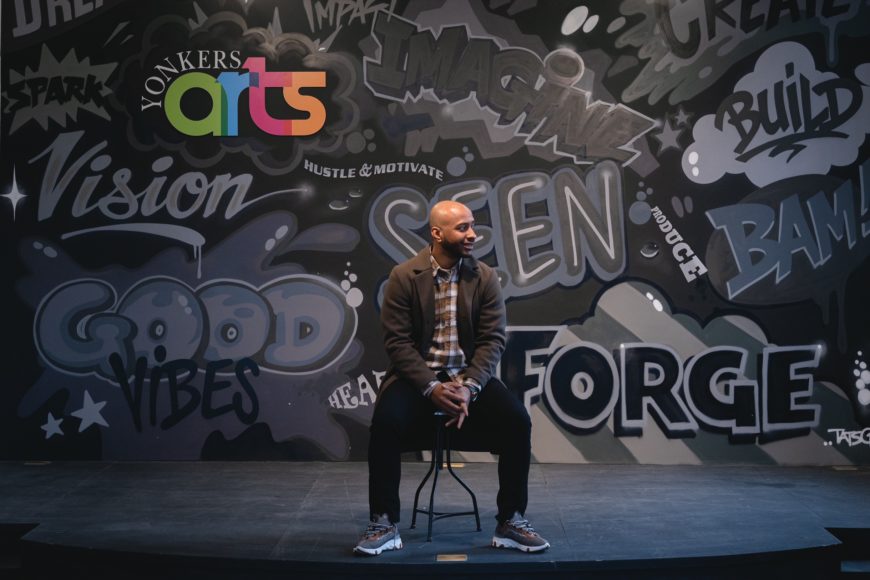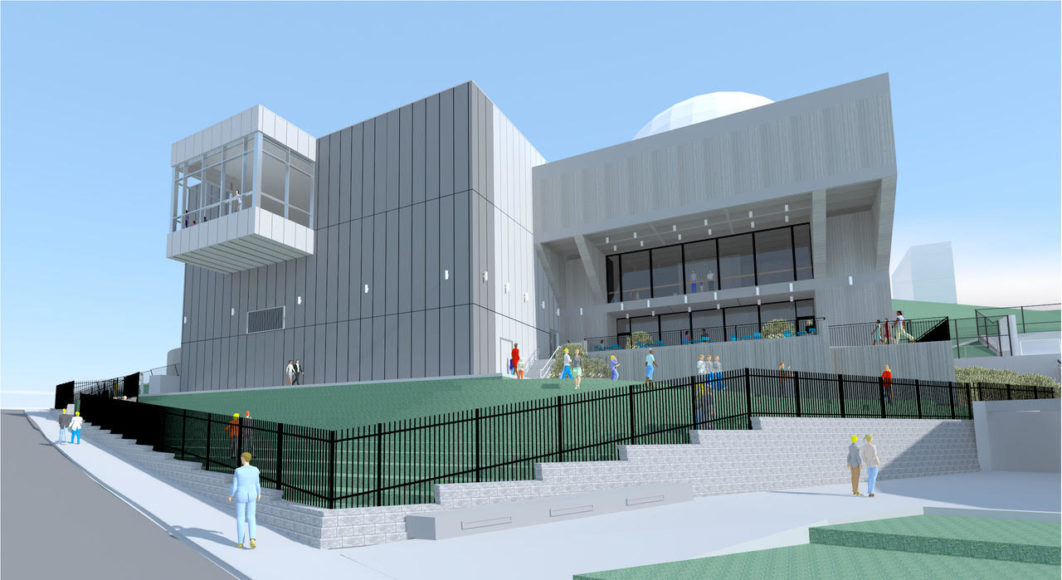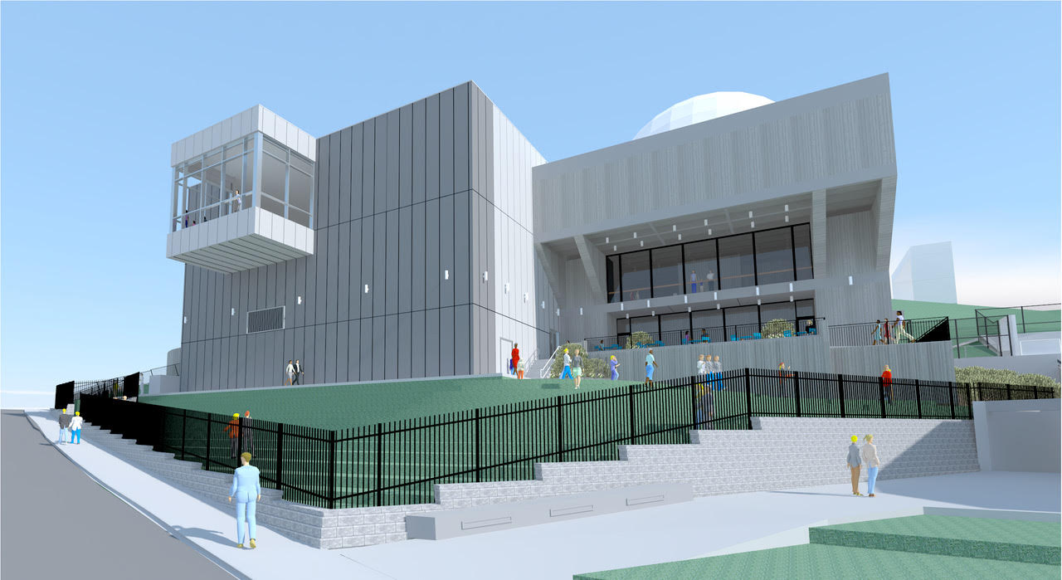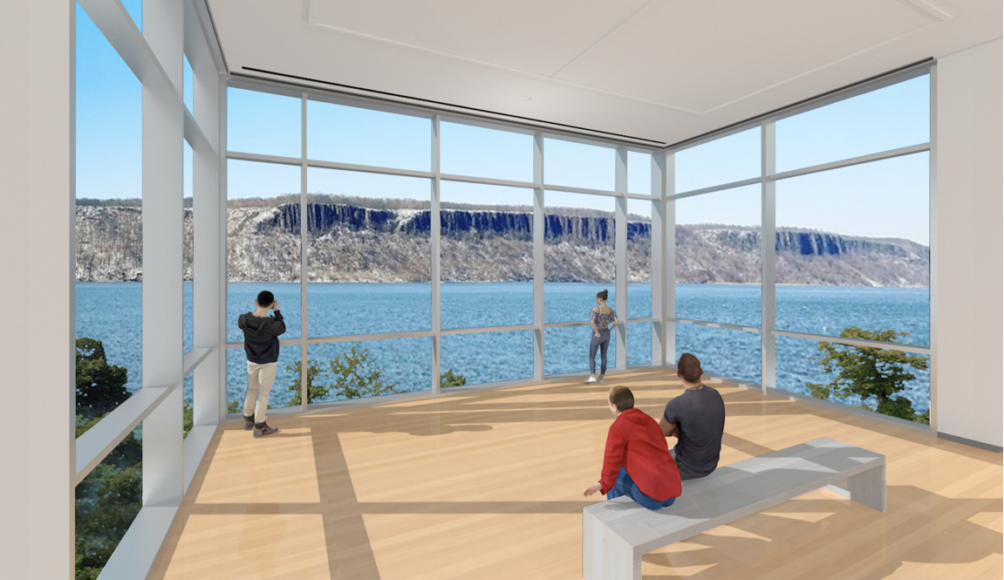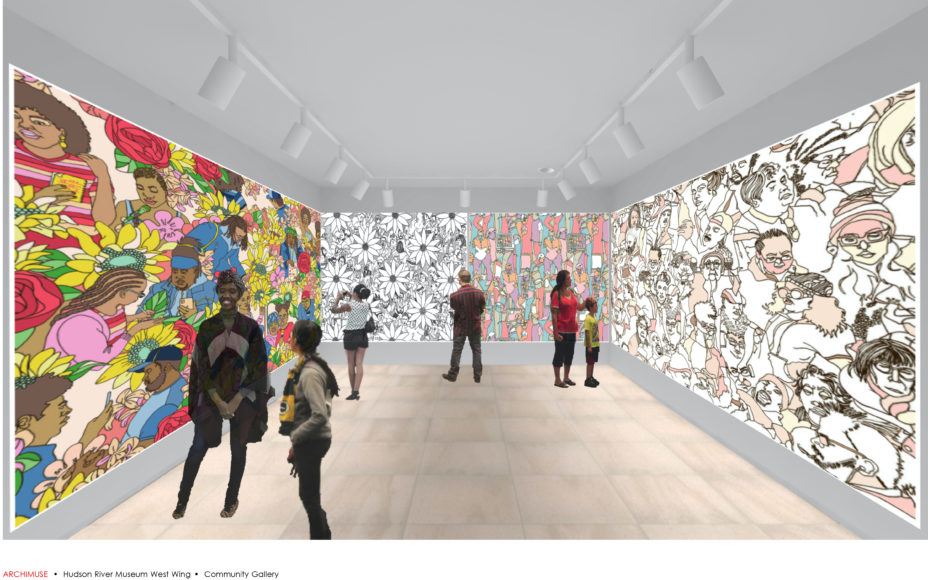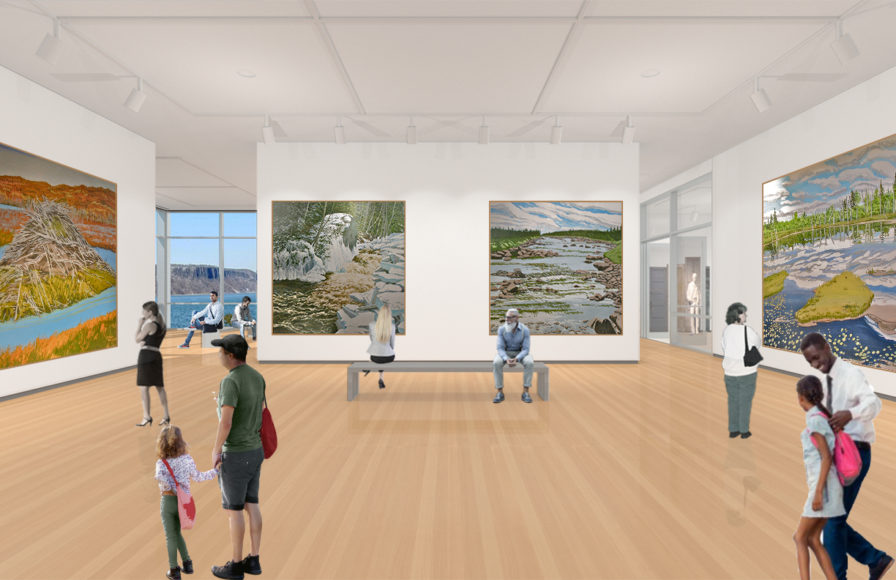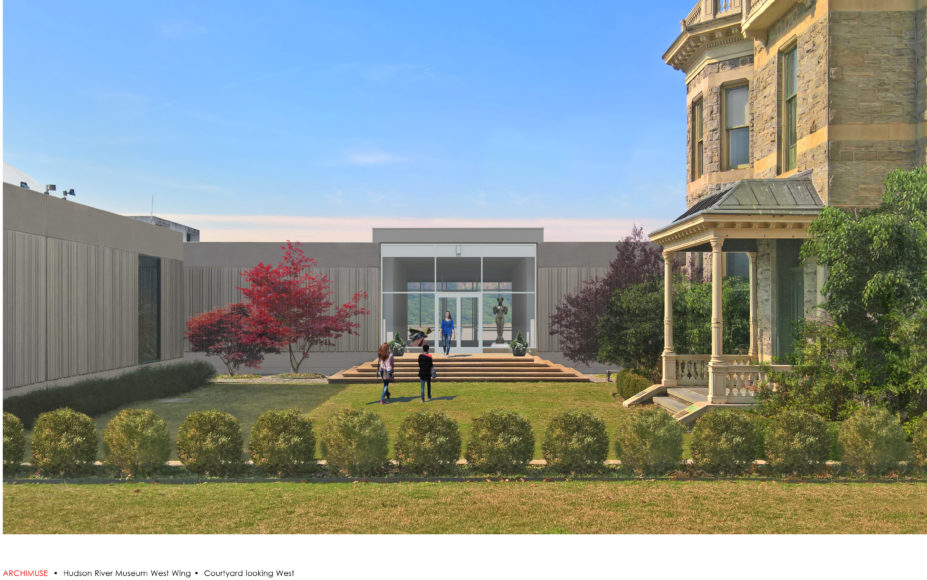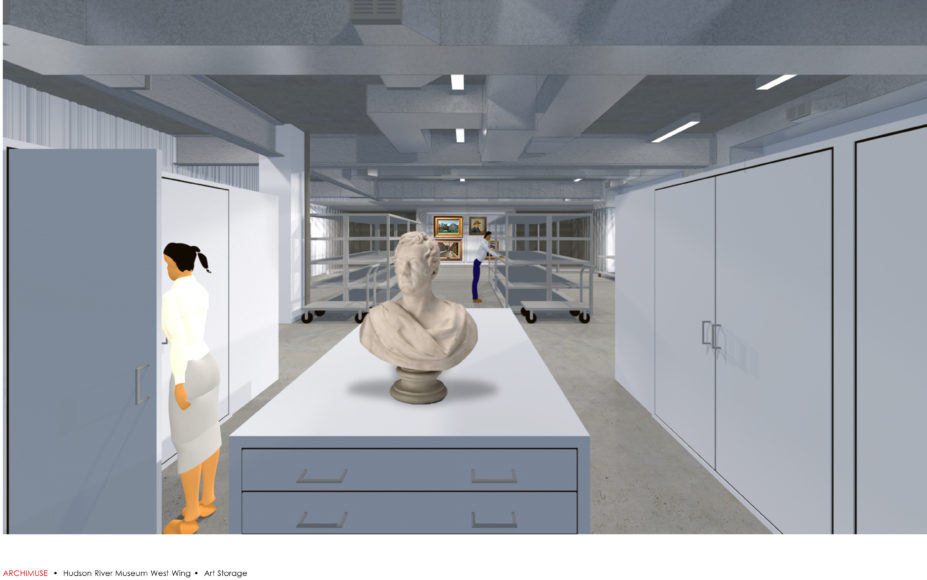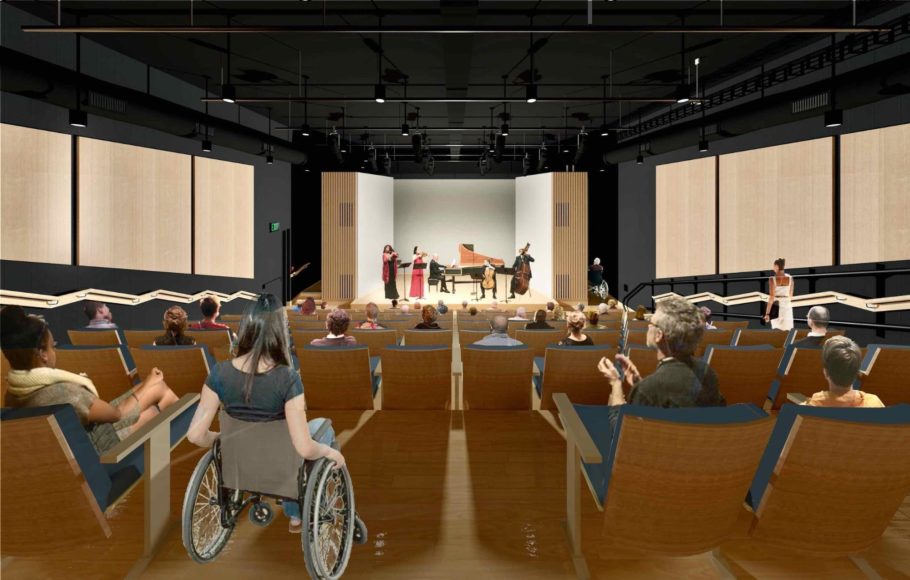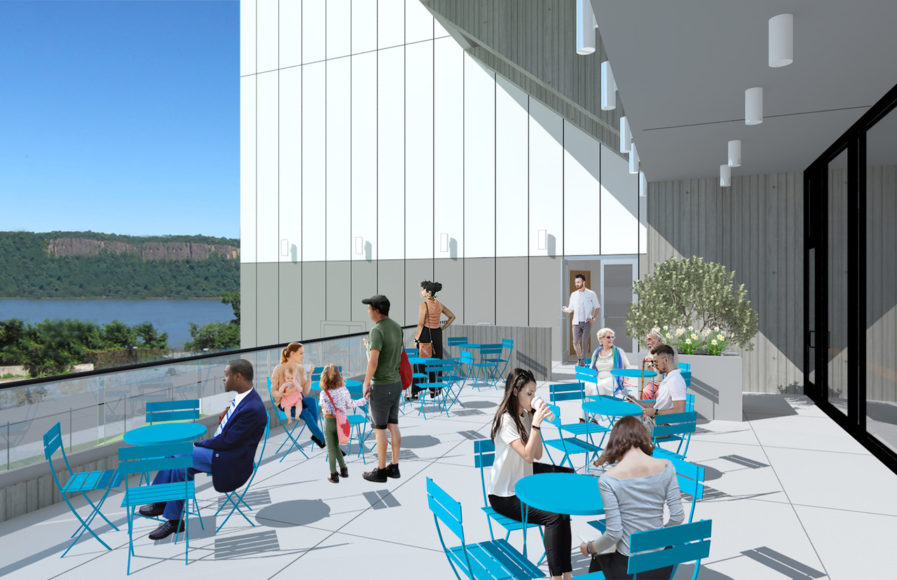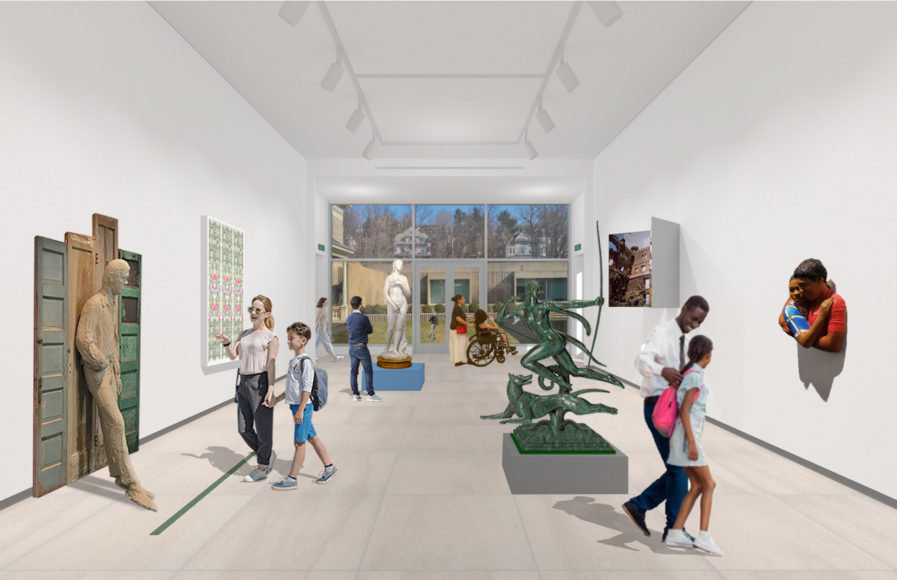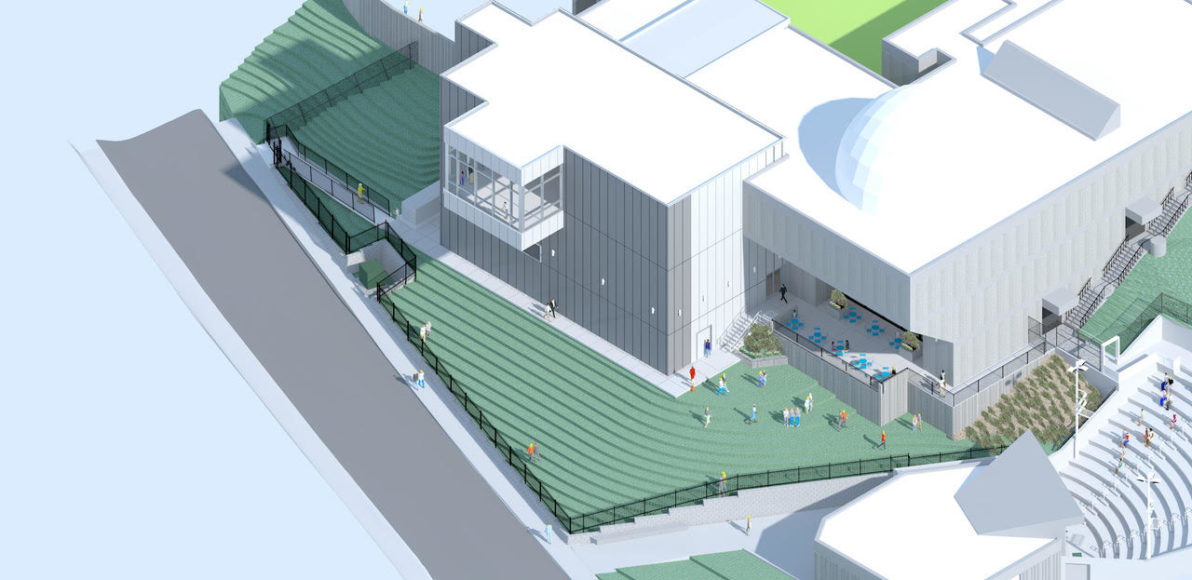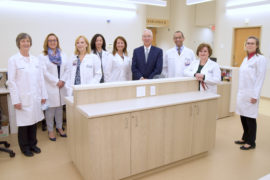From the Hudson River Museum to the Untermyer Gardens Conservancy to galleries and public murals and sculptures, art is key to attracting people to live and work in as well as visit Yonkers. (See sidebar.) Many of the artists working in Yonkers have studios in the Carpet Mills Arts District, which was officially created in 2016 by a new city zoning law.
The arts district is in the Alexander Smith Carpet Mills Historic District and occupies the former carpet mills’ factory buildings. Smith, a onetime Congressman as well as businessman, established the Alexander Smith & Sons Co. in Yonkers during the Civil War. Eventually, it consisted of more than 80 buildings on 38 acres where thousands of workers used specially designed looms to weave some 50,000 yards of carpet daily. The facilities and housing for the workers stretched from Lake Avenue on the north to Ashburton Avenue on the south and Nepperhan Avenue on the west to Saw Mill River Road on the east.
In the mid-1950s, the Yonkers plant shut down entirely, leaving the massive complex vacant. Most of the complex stood empty for nearly 20 years until developers and smaller manufacturers began securing pieces for various industrial uses.
Louis Albano, Yonkers’ commissioner of planning and development, says the concept of turning the area into an arts district occurred over time. “As the industrial users started to relocate and close, some of the new owners came in and wanted to take the loft spaces and lease them to various tenants, such as furniture restorers, painters, sculptors, costume designers and textile firms,” says Albano.
Two of the buildings at 540-578 Nepperhan Ave. were offering studios to artists. The group occupying the studios there was called the YoHo (for “Yonkers above Houston”) Artists. More and more artists moved there in the 1990s and into the new millennium, and the group began offering annual open studio weekends to bring in visitors to see their work.
Over the upcoming years, additional arts-related businesses opened shop in the industrial area and the building owners wanted changes in the zoning.
According to Albano, “What we were trying to do was to create zoning for the arts district that would allow for retail use and public space but wouldn’t disturb any of the existing industrial businesses that were there,” he adds.
In 2015, Yonkers Mayor Mike Spano joined owners of the historic Alexander Smith Carpet Mills property and local artists to announce the proposal of the Carpet Mills Arts District. For the first time, owners representing more than 1.5 million square feet of Carpet Mills partnered with Yonkers to create the arts district. Yonkers received a $500,000 capital grant from Empire State Development, the state’s economic development agency, to help fund exterior improvements to the buildings, street-side banners, signage and lighting to help brand the Carpet Mills Arts District.
Albano says he testified at the 2016 city council hearing designating the arts district. “I explained how it would work and how we wouldn’t be displacing any other businesses but would allow the expansion of the artists’ presence within the city of Yonkers,” he says.
Once the rezoning was approved, it allowed for 20% of the space in the buildings to be used for retail purposes. The proposed zoning change also allowed for retail shops to operate at street level, with the intention of servicing the arts community and those attending the community’s regularly scheduled events.
“It not only allowed for the artists to show and sell their work; it allowed for simple things like restaurants and coffee shops to open,” says Albano. “A typical building might have a sculptor on one floor and a piano restorer right below them, with a furniture repair shop right next door,” he adds. Other uses the city was open to were retail home furnishings, sports, amusements, art galleries, crafts and import-export businesses.
The Carpet Mills Arts District has become an incredible success story for the Yonkers arts scene, with more than 80 artists in the YoHo Artist Studios, plus many other artists in studios located in surrounding buildings. Another of the tenants of the arts district is Yonkers Arts, which now occupies a 4,000-square-foot space at 216 Lake Ave. with a full functioning gallery and performing arts center. The nonprofit’s executive director Ray Wilcox has been instrumental in coordinating many of the public art projects enhancing Yonkers and was the driving force behind the “Black Lives Matter” mural that was placed behind Yonkers City Hall last year.
Just last October, Yonkers, in partnership with Yonkers Downtown/Waterfront BID, sponsored the seventh annual Yonkers Arts Weekend. Thousands of visitors came to the Carpet Mills Arts District to visit the YoHo Artists Open Studios and the Yonkers Arts Project Space, where there was a local artists showcase, poetry readings and dance and music performances. They were able to take a trolley to other Yonkers arts sites like the Hudson River Museum and Untermyer Gardens Conservancy as well as pop-up and existing galleries and outdoor art installations.
“As an offshoot of creating that arts district, we now have been able to increase our funding to the downtown art galleries and we’ve been able to reach out to local artists to create murals that you see around downtown right now and the sculptures that are in the parks and along the waterfront,” Albano says. “We’ve also helped open up small galleries in the libraries to feature local artists, and all are free to the public. “We’ve really created a vibrant art scene in Yonkers.”
For more, visit yonkersny.gov/play/art-museums.
Laura Joseph Mogil is a freelance writer and frequent contributor to the WAG. She is resident of Briarcliff Manor, NY.
While you’re in the Carpet Mills Arts District…
Why not enjoy some of these area cultural attractions?
Blue Door Art Center — The nonprofit gives voice to the underserved through exhibits, workshops, readings and performances. On Dec. 18, join Blue Door virtually and in person for “Art Speak from Page to Performance,” a 1:30 p.m. writing workshop on activism and empowerment followed by a 4 p.m. reading. $15. Bluedoorartcenter.org.
Hudson River Museum — This art, science and history museum — home to a planetarium and the Gilded Age Trevor Mansion — often presents shows related to the river that gives it its name. The museum is in the midst of a long-awaited west wing capital improvement project to create special exhibit galleries with spectacular views, a sculpture court, a 100 tiered-seat auditorium, art storage space and a climate control system. On view through Jan. 16 — “African American Art in the 20th Century.” hrm.org
Riverfront Art Gallery/Yonkers Public Library — The Riverfront Art Gallery exhibits contemporary art. Through Dec. 20, “UBUNTU: I Am Because We Are,” exploring works in a variety of media whose roots are in Africa. Also on display in the Riverfront Library lobby — five of the six life-size bronze figures of Africans enslaved at Philipse Manor Hall in Yonkers who were the first to be freed by U.S. law in 1799, 64 years before the Emancipation Proclamation. Sculptor Vinnie Bagwell, who did Yonkers’ statue of Ella Fitzgerald, has imagined these slaves and their stories. In early spring 2022, construction will begin on the Enslaved Africans’ Rain Garden, which will ultimately house Bagwell’s sculptures. Ypl.org/artgallery/
Untermyer Gardens Conservancy — Once part of Greystone, the Yonkers estate of crusading, orchid-wearing lawyer Samuel J. Untermyer, the restored Greco-Persian-style Untermyer Gardens Conservancy, featured in May WAG, consists of 43 acres, including a garden walled on three sides that leads to neoclassical elements — arcades, temples and a small, open-air amphitheater guarded by two sets of twin Ionic columns topped with sphinxes; and watery ones — pools, canals and fountains — all overlooking the Hudson River and Palisades. Oh, yes and thousands of trees, shrubs, perennials and annuals as well as tropical and aquatic plants. Beginning Dec. 10 at 5:30 p.m., the Walled Garden is electric, literally, with 100,000 lights. Enjoy seasonal music, free hot chocolate and free admission 4:30 to 8 p.m. through Jan. 2. Untermyergardens.org.
Urban Studio Unbound (US+U)/Warburton Galerie — Emerging and mid-career artists join forces in this 4,000-square-foot space, home to exhibits and workshops. Urbanstudiounbound.org.
— Georgette Gouveia

